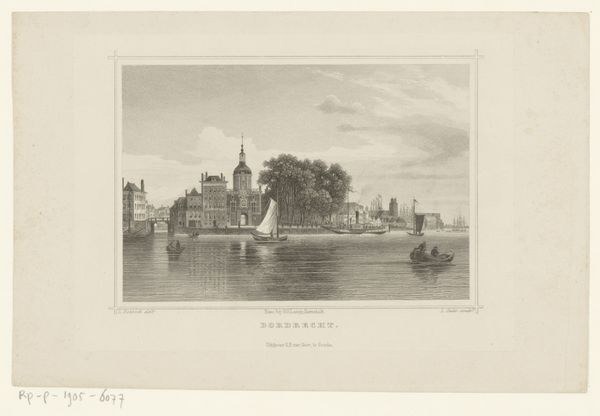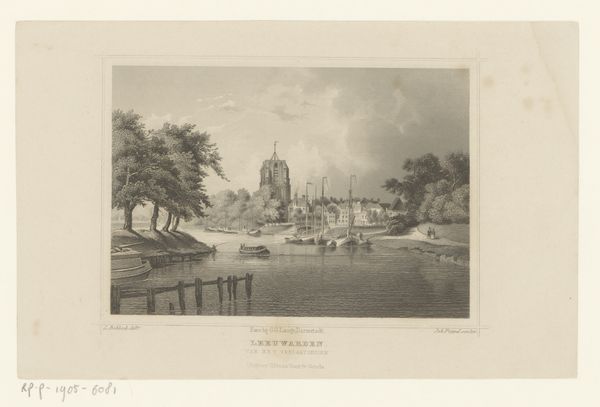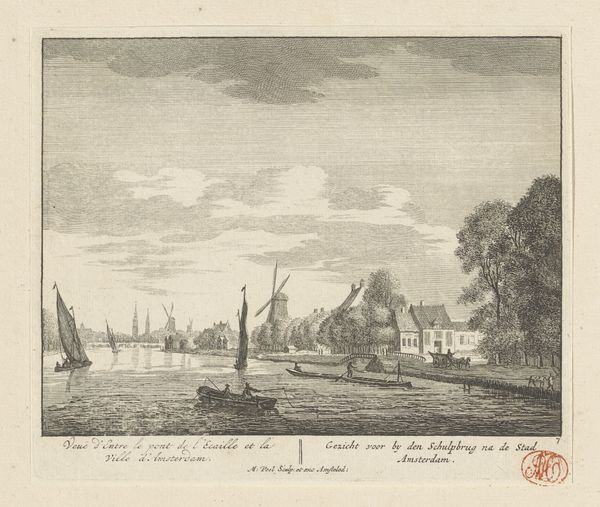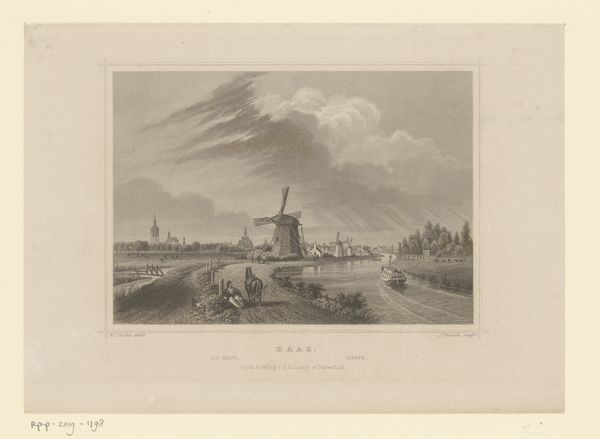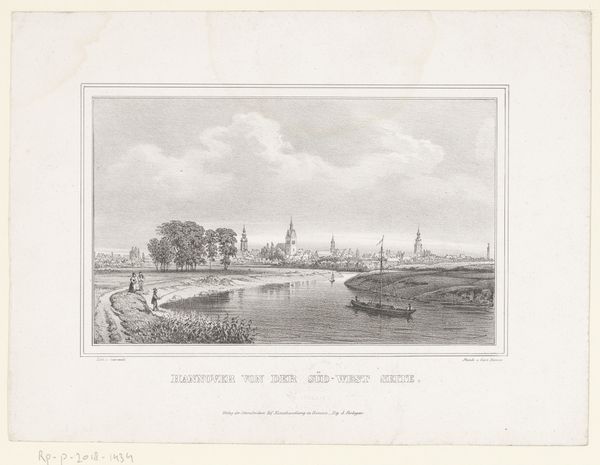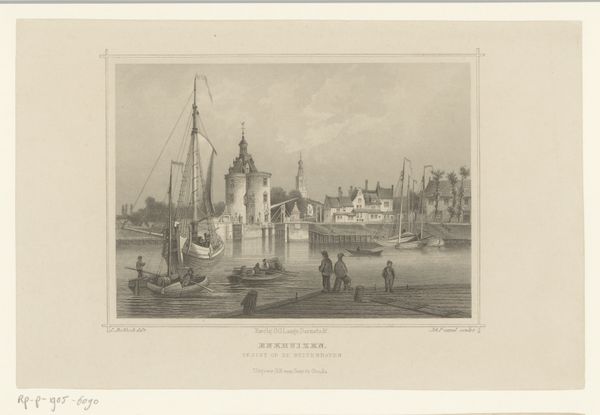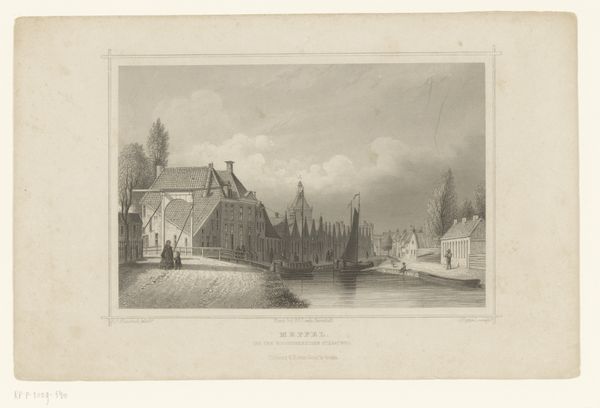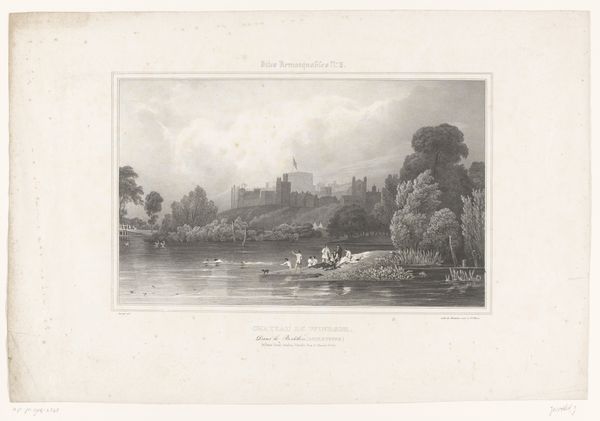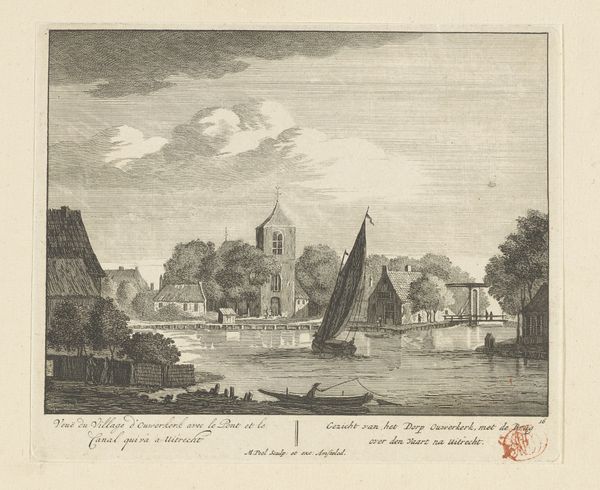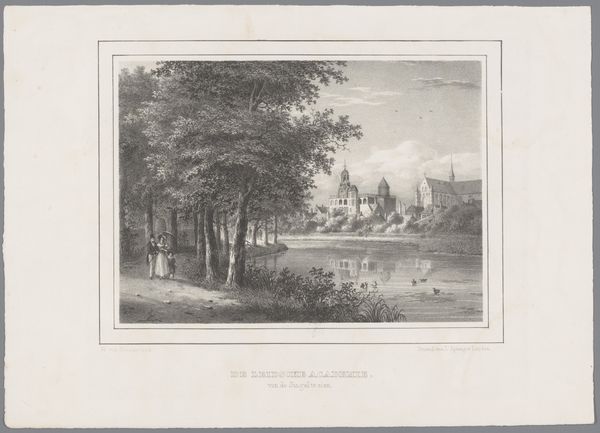
Dimensions: height 234 mm, width 160 mm
Copyright: Rijks Museum: Open Domain
Curator: Here, we have "Aquaduct bij Schloss Wilhelmshöhe te Kassel" by Julius Umbach. It’s an etching, dating sometime between 1831 and 1877. What's your initial feeling when you look at it? Editor: It feels… peaceful, but in a kind of wistful, faded way. Like a beautiful memory seen through a very old photograph. The scene has an unreal clarity—slightly eerie, if I’m honest. Curator: That's interesting. Considering the romanticism movement was interested in exploring themes of nostalgia, escapism, and the sublime, this aligns quite well. This work also gives insight into 19th-century engineering and its relationship to the landscape and how notions of progress intersected with visual culture. Editor: I can see that! It’s fascinating how they integrated the aqueduct into the landscape so seamlessly. Are we celebrating industrial advances, or mourning the pre-industrial past here? Maybe a little of both. The way the figures are so tiny and kind of generic emphasizes human insignificance in relation to the scene. Curator: Exactly! It captures the ambivalent relationship humans had with industrial and technological advancements in that period, expressing concerns about environmental impact and rapid urbanization and offering commentary on class and gender roles by contrasting leisure activities by those figures in the landscape with workers who may be out of frame. Editor: There is that division for sure. You look at this and wonder, who really gets to enjoy all this progress and idyllic setting and who is enabling it. Still it's very much playing with light and shadow. It has that almost dreamlike quality, hasn’t it? That monochrome haze—like looking back into history itself. It's beautifully composed, pulling your eye toward that grand tower while quietly reminding you that you are watching something static, fixed, over and done with. Curator: Precisely. It serves as a visual testament to those who are often excluded from such depictions of beauty and leisure, pointing towards a discourse on power and representation within landscape art. Editor: In a sense, Umbach’s piece serves as a lens. He doesn’t hide his feelings for this place—its past glory and its future challenges. What better role could any artwork have, than encouraging us to look through it, to a larger conversation? Curator: I think I'll walk away and start a similar conversation elsewhere... so long for now.
Comments
No comments
Be the first to comment and join the conversation on the ultimate creative platform.
